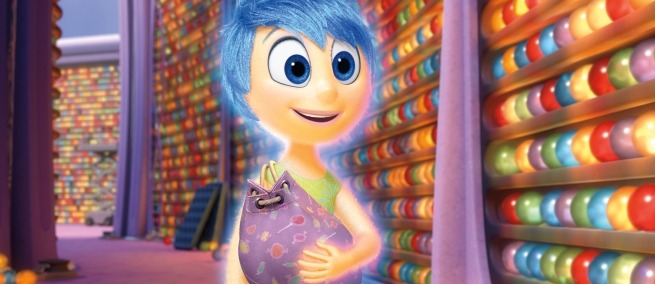
Pixar’s latest film INSIDE OUT has been credited with helping kids understand their emotions, but what does a psychologist think? Daniel Goleman is an internationally renowned psychologist, author of Emotional Intelligence, and pioneer in the field of social-emotional intelligence. Science & Film spoke on the phone with Dr. Goleman on the occasion of a seven-day run of the film at the Museum of the Moving Image and its Academy Award nomination.
Science & Film: What can kids learn from watching INSIDE OUT?
Daniel Goleman: Kids can learn a lot from watching that film. I was a co-founder of the movement to teach social-emotional learning in schools to help kids understand their own emotional life, empathize, cooperate, and so on. I think this is a fabulous aid because kids learn different emotions, they learn that you are not your emotions, and they learn that emotions come and go. They also learn that there are a range of foundational experiences in your life which provide a sense of basic security, or not, and that your early experiences can shape your later experiences. In other words, there is a range of fundamental understandings about our emotional life that are communicated in the movie quite skillfully. Yet you don’t feel like it’s a teaching movie.
S&F: Right, emotions are represented as characters.
DG: Exactly, it’s clever.
S&F: Psychologist Paul Ekman was an advisor on INSIDE OUT but his view that there are six universal basic emotions has been criticized by some for being too simplistic. Do you agree with this critique?
DG: This is one of those areas in science where there is no final answer, just points of view, and people who have other points of view criticize Ekman. I would say that most emotions researchers probably agree with him, but there will always be critics. My own feeling is that it is a huge service to the public to get the point across that different emotions create different personal realities, reactions, ways of processing information, and skews in perception. The fact that he used Ekaman’s six isn’t as important as what kids can learn in general about their emotional life from the movie.
S&F: Do you think the filmmakers did a good job dramatizing the psychology?
DG: I thought they did a fabulous job. It’s one of my favorite movies.
S&F: Who is your favorite character?
DG: Well, I was rooting for Joy, but I thought Anger was pretty cool.
S&F: Do any of the topics in the film relate to things you’re thinking about now in your work?
DG: I just wrote a book called The Triple Focus: A New Approach to Education, with Peter Senge, which talks about the next steps in social-emotional learning–which is a very large movement now across the country. I feel that INSIDE OUT moves the bar in the right direction because it’s educating masses of kids about the fundamentals of emotional life, which means that it’s helping further the movement’s goal to have kids learn the basics of understanding and managing their feelings.
The Museum of the Moving Image will screen INSIDE OUT February 13-19 followed by character design workshops recommended for ages 6-12.